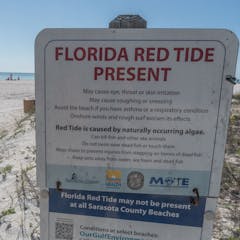
Articles on Monitoring
Displaying all articles

Methane is a potent greenhouse gas that can leak from oil and gas wells, pipelines and landfills. Satellites can spot the releases fast enough to get them fixed and help protect the climate.

Reducing particle pollution can save thousands of lives, but states need more data to inform better controls. An atmospheric scientist explains what data and actions are needed.

The tiny organisms that cause harmful blooms of algae can have a big impact on your trip to the shore. A toxicologist explains what causes these events and how to keep people and pets safe.

Time-lapse animations that once took days to create are now easy to build with publicly available satellite images and free online tools.

Data from camera traps around the world provide a strong case to support the designation of protected wilderness areas.

Monitoring volcanoes is a bit trickier when they’re deep under the ocean’s surface.

Keeping an eye on your oxygen levels at home can give you early warning your COVID is deteriorating.

Automated content moderation using algorithms are quick and cheaper. But, they’re not necessarily better than human beings. They are prone to errors and can impose bias in a systemic scale.

COVID-19 kept many scientists from doing field research in 2020, which means that important records will have data gaps. But volunteers are helping to plug some of those holes.

A new plan targets areas around the world that can store carbon and protect large numbers of species. It calls for preserving these lands, working with Indigenous peoples and connecting wild areas.

A new study shows that while fine particle air pollution has declined nationwide over the past 40 years, the health and environmental benefits haven’t been shared evenly.

The Australian National University is turning to digital proctoring to replace the role of a walking invigilator. But who watches the proctor, what are the risks, and what data will be collected?

‘Smart cities’, featuring networks of automatic lights, video cameras and environmental sensors, have been hailed as an enhancement to urban life. But they are also tools of surveillance and control.

A new study lays out a road map for protecting and restoring 50% of Earth’s surface, targeted to preserve biodiversity and maximize natural removal of carbon from the atmosphere.

It’s cheaper to prevent biological invasions than to react after they happen. But it’s hard to detect invaders while there are still just a few of them. Knowing when and where to look can help.

Drones are low cost and easy to operate. They give quality, high resolution outputs, and can be deployed fast and often.

Red tide and a blue-green algae outbreak are fouling hundreds of miles of coast, killing fish and driving tourists away from beaches. Some of the causes are natural, but human actions play a big role.

Tracking wild animals can provide lots of valuable data. New research suggests audio recordings of wild wolves can replace the typical radio collars, which can be expensive and intrusive.

In the aftermath of fires or logging, conservation needs to focus on recovering the health of the remaining vegetation, not just the size of the forest or woodland.
